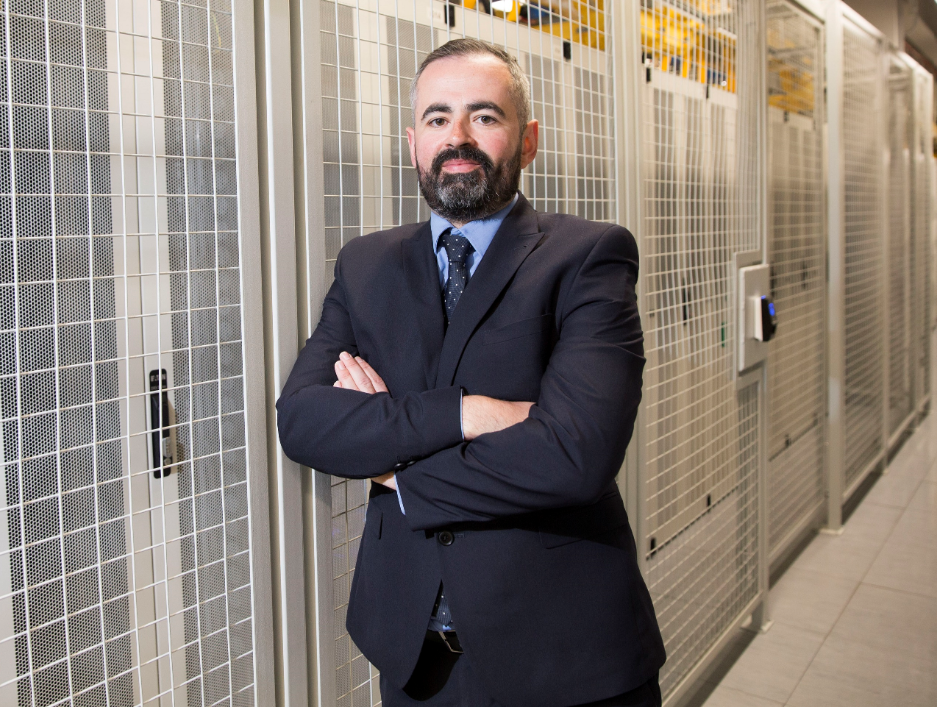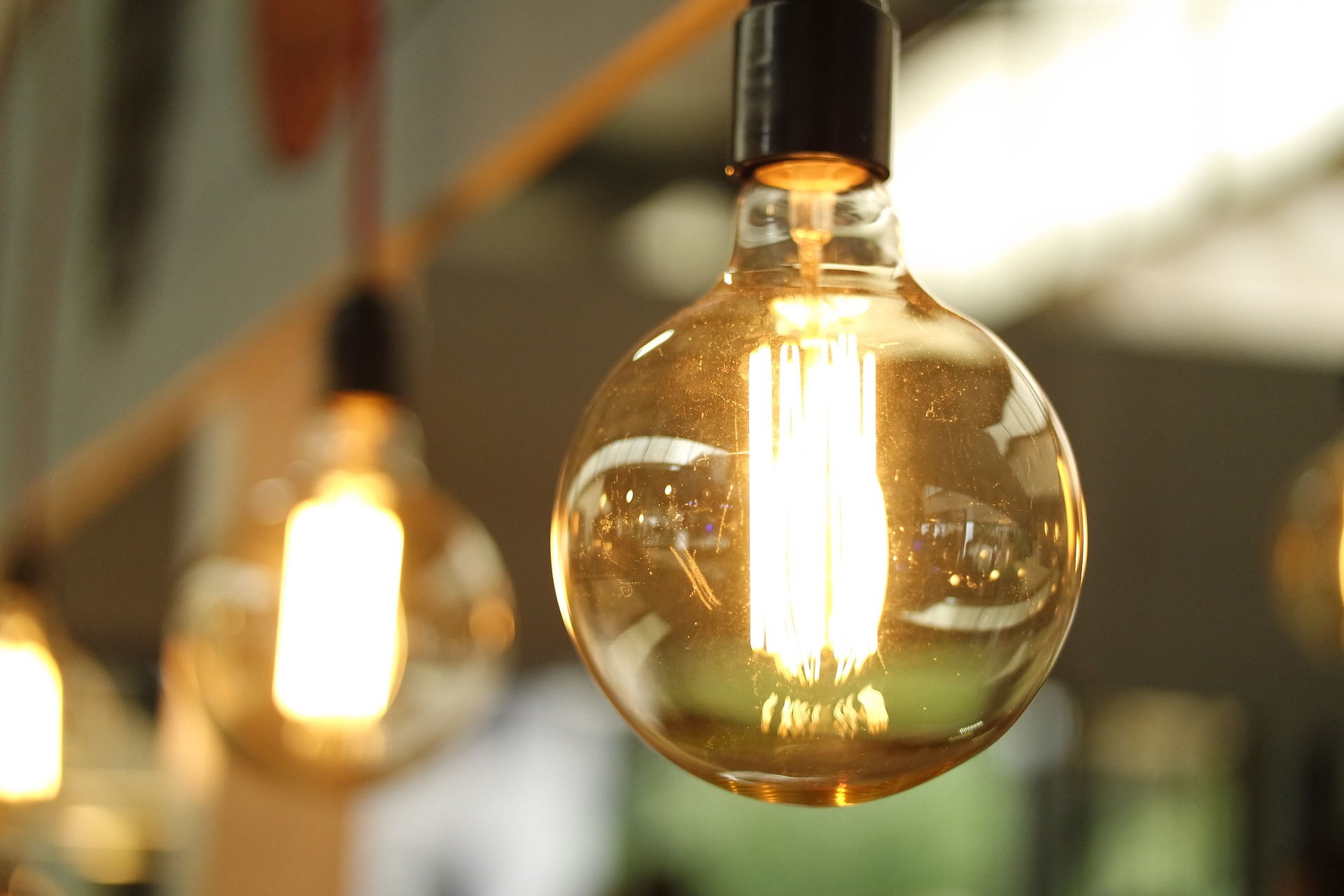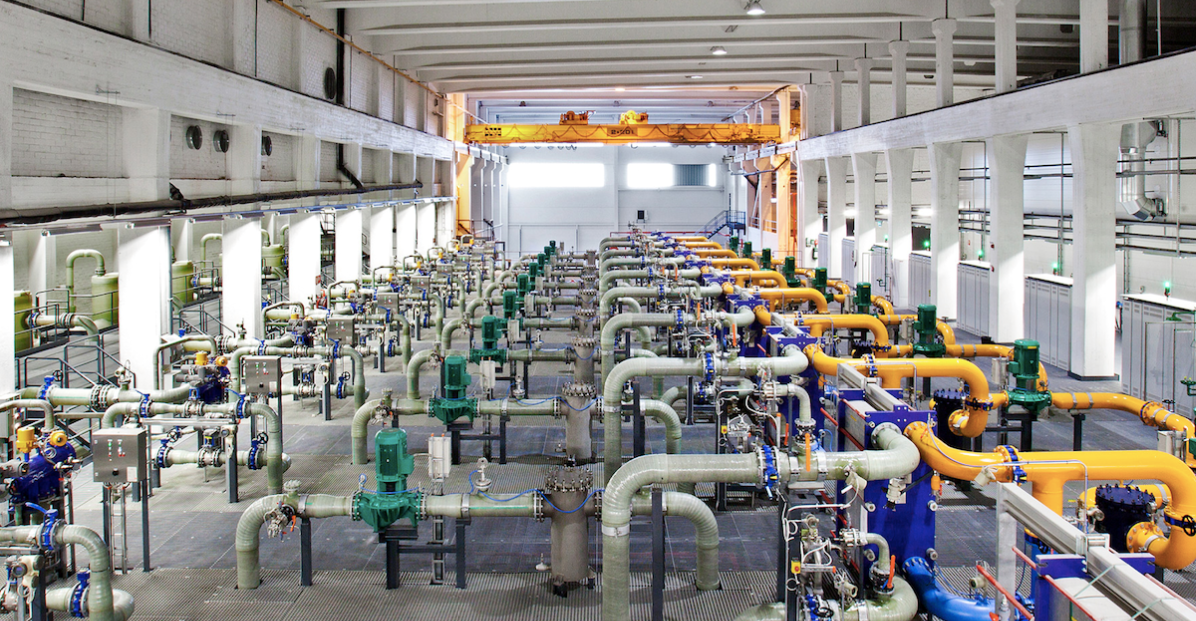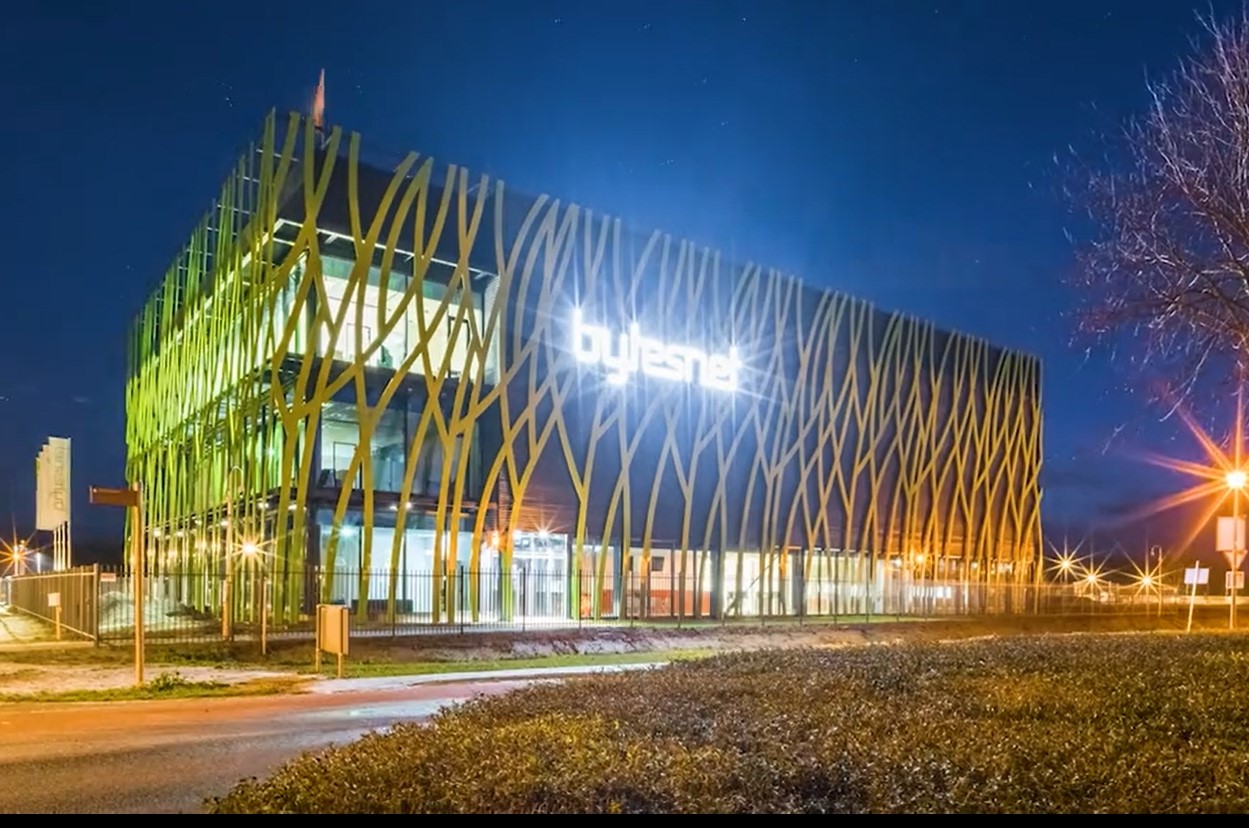Green IT
Data Centres
Green IT
IT
DataVita joins international pledge to drive IT sustainability
DataVita has committed to a carbon-neutral future by becoming the first Scottish IT company to sign the Climate Neutral Data Centre Pact.
Launched earlier this year, the
pan-European initiative has seen more than 40 companies and trade organisations
pledge to reduce their carbon footprint and make data centre and cloud
operations more sustainable.
As part of the pact, DataVita has
agreed to meet ambitious 2025 and 2030 targets in areas such as energy
efficiency, water conservation, heat recycling, and the re-use and repair of
server equipment.
The Climate Neutral Data Centre
Pact follows the launch of the European Green Deal, which set the goal of net
zero carbon emissions by 2050, with companies involved supporting the
transition to a climate-neutral economy.
The formal agreement builds on DataVita’s ongoing plans to
boost sustainability, with a move already underway towards 100% renewable
energy sources by generating its own electricity from wind power supported by
battery-powered back-up systems. DataVita plans take its data centre off the
grid next year, generating its own electricity from wind power with
battery-powered back-up systems.
DataVita’s data centre currently
has a power usage effectiveness (PUE) ratio of just 1.18 – well below the industry
average of 2.0. It was one of the first UK facilities to introduce an energy
efficient, refrigerant-free air-cooling system, which uses Scotland’s natural
climate to maintain optimum temperatures, instead of air conditioning units
that consume vast amounts of energy.
Danny Quinn, managing director of DataVita, says: “We’re fast becoming a digital and data-driven society, which means data centres are becoming an even more critical element of our infrastructure. Data centres are fast becoming the fourth utility, and with that we have a real opportunity and responsibility to focus on sustainability.
“By their nature, data centres can
consume large amounts of energy, but the IT industry is also one of the most
forward-thinking sectors when it comes to adopting new technology and making
positive changes. The Climate Neutral Data Centre pact highlights the
industry-wide focus on addressing the greatest challenge of our time, and while
we’re already making progress with sustainable processes and systems, we’re want
to further reduce our carbon footprint.
“The global focus on sustainability
is not limited to the data centre and IT industry. As businesses become more
aware of their and their supply chain’s environmental impact, small changes –
and their associated energy savings – can make a larger collective impact.”
Beatrice - 9 February 2021
Data
Data Centres
Green IT
Techbuyer launches Interact - a tool to address the reduced carbon agenda
Techbuyer Group has announced the launch of an energy optimisation software tool which allows the data centre industry to better address the climate change risk. The tool, which goes to market under the brand name 'Interact, is the culmination of a two-year research and development partnership between Techbuyer and the University of East London.
Interact delivers previously unseen energy optimisation
recommendations at component and system level for data centre server hardware,
allowing stakeholders to reduce their carbon footprint, limit emissions, and
achieve expenditure and operational cost savings. With the data centre sector
responsible for a significant percentage of worldwide energy consumption – and
expected to grow 500% globally by 2030 – carbon optimisation is essential.
In simple terms, the Interact tool allows users to identify their optimal server configurations in terms of performance and energy efficiency as per individual requirements. The tool will recommend both new and refurbished options, whichever is best for client requirements. Cost savings can be enormous. A recent case study of 770 servers delivered potential savings of £200,000 in year one and £480,000 in years two and three.
Carbon savings were over 460,000kg of CO2 equivalent on the running costs, and much more than that on supply chain carbon. The use of refurbished machines avoids almost a metric ton of the emissions involved in mining, manufacture and transport of the new equivalent. Most of the climate change agenda focuses on use phase, but there is a growing appreciation of the importance of reuse as well.
The Interact tool began as an Innovate UK supported collaboration between Techbuyer and the University of East London. The academic supervisor, Rabih Bashroush, is a world leader in the field of energy efficiency for data centre IT hardware who recently featured on Channel 4 Dispatches.
Lead developer and researcher, Nour Rteil, carried out months of component level experiments that enabled the team to create a smart tool that analyses component and rack level server solutions to optimise cost, energy efficiency and reduce carbon emissions. Her research has led to a paper co-authored by Nour, Rabih Bashroush, Techbuyer Group IT Director Rich Kenny and Techbuyer Sustainability Lead Astrid Wynne in the Institute of Electrical and Electronic Engineers Transactions on Sustainable Computing. The peer-reviewed research outlined the effect of a declining Moore’s Law on data centre IT refresh.
“The IEEE paper represents peer-reviewed evidence that it makes perfect sense to refresh with properly configured refurbished servers for energy efficiency as well as reduced environmental footprint. This is the first time this has been done. The Interact tool builds on that with machine learning smart software to give the most effective energy and cost saving solution for IT refresh – be that through replacing existing infrastructure with new or refurbished server configurations or through upgrading existing configurations instead ,” says Rich Kenny, Global IT Director for Techbuyer and Directory of Strategy for Interact.
Beatrice - 12 January 2021
Green IT
Infrastructure Management
Software & Applications
Arriva drives green mobility with power infrastructure at bus depot
How smart e-mobility infrastructure supports the transition to carbon neutral public transport in the Merseyside area.
Arriva Merseyside is a public transport operator running bus services in and around the Liverpool City Region, providing public transport services to the nearly 1.5 million local residents.
Arriva is committed
to making its business carbon neutral by 2030. The company also wants to reduce
its impact on air quality in the urban centres where its services operate.
In 2018, Arriva
Merseyside purchased 12 Enviro Buses, BYD ADL Enviro200EV single deck pure
electric buses to serve some of the bus routes in Liverpool’s city centre. The
e-buses joined the 51 hybrid and 9 gas buses already added to the fleet earlier
that year. This was the introduction of the final part of a £21 million
investment into cutting edge green technology from Arriva Merseyside. The
purchase was also supported through a successful £5 million bid for Government
(OLEV) funding for new, greener buses, in partnership with Arriva.
“Arriva is committed to reducing carbon emissions, both by encouraging more people to use public transport and by minimising our own environmental impact” says Marcello Giovanardi
Category Manager –
Fuel, Lubricants, Utilities at Arriva. “We were already working with Schneider
Electric as our partner on energy bill validations and commodity risk
management for the depot, so we’re aware of their expertise in this area and
reputation for delivering reliable high-performance solutions.”
Arriva’s
environmental commitment extends to its power infrastructure, which is vital to
supporting the increasing number of electric vehicles in its fleet. They were
therefore seeking a partner with strong sustainability credentials to design
and install the electrical infrastructure to deliver an industrial supply at
the depot in Green Lane, Merseyside. The central requirement of the project was
to provide reliable and secure electricity supply for 6 double bus chargers on
a charging island in the middle of the depot.
A key goal was to
minimise disruption to normal bus services during the installation process. It
was essential that the solution enabled a reliable and resilient power supply
with 100% uptime to the electric bus chargers. The provider of electrical
infrastructure would be required to work in close collaboration with both the charger
manufacturer and the local network operator, to ensure all components of the
new system met the required regulatory standards as well as Arriva’s Health
& Safety policy for people on site.
The solution itself
was required to be highly durable and withstand all weather in its outdoor
location, whilst also having a minimal footprint as space is at a premium in
the urban setting of the Green Lane depot.
With Arriva’s
commitment to transition towards emissions-free operations, the charging
infrastructure would also need to have capacity to grow the number of electric
buses it services in the future.
The project began
with a comprehensive consultation process with Arriva Merseyside and the other
technology and utilities partners involved, Schneider Electric, led by its
Power Consultancy team. The parties then designed, then installed and
manufactured an 11kV packaged substation in a configuration tailored to the
project requirements. Key features included the implementation of a low voltage
MCCB feeder pillar, RN2c T2/21 ring main unit (RMU), and transformer to step
down the supply to 415v as required by the chargers. The MCCB feeder pillar
featured ComPact NS circuit breakers at 1600A to enable built-in power and
energy metering functionalities through embedded MicroControl units. The direct
coupling used in the substation design means that the product required minimal
cabling to be installed and will require minimal maintenance over its lifetime,
reducing overall cost.
The 11kV packaged substation,
including switchgear and transformer, is manufactured in Schneider Electric’s
plant in Leeds under a direct and controlled factory assembly, making the
overall product incredibly safe. The packaged substation offer is also
consistent with Arriva Merseyside’s environmental commitment, having been
manufactured to meet the ISO 14001 environmental standards as standard.
The substation was
installed on the depot’s land near the perimeter of the site, making the most
effective use of space available in the urban location. This was possible due
to the highly durable design of the components. The MCCB feeder pillar,
designed for the UK market, is fully compliant with ISO 12924 standard to
ensure that components will not rust even when constantly exposed to the
elements for years.
Delivered as a
single unit, the substation implementation was a time-efficient and streamlined
process, successfully minimising disruption to on site operation of bus
services during the project. The unit also has capacity to support a larger
number of chargers, should Arriva Merseyside decide to expand the all-electric
portion of its fleet in future – without further expansion of the depot’s power
infrastructure.
The depot now has
two separate power supplies, providing back up capability where required to
ensure Arriva has even greater resiliency of supply.
Arriva Merseyside
now has a safe, reliable and convenient charging infrastructure in place for
the 12 electric buses in its Merseyside fleet. Continuous achievement of 100%
uptime and a charge time of 4-6 hours allows buses to be charged overnight,
which is convenient, efficient, and cost-effective. Using this system, Arriva Merseyside
can now operate its first all-electric bus route in Merseyside. The Schneider Electric
solutions are contributing to cleaner, greener public transport for the
Merseyside area.
Arriva Merseyside
now has the capacity to scale the number of chargers at the Green Lane depot
going forwards, to accelerate its progress towards its carbon neutral 2030
goal. The shift towards more electrified public transport is expected to combat
air pollution in the local area, as well as take Arriva one step closer to its
company-wide carbon neutral goal.
EcoStruxure is
Schneider Electric’s open, interoperable, IoT-enabled system architecture and
platform. EcoStruxure delivers enhanced value around safety, reliability,
efficiency, sustainability, and connectivity for our customers.
EcoStruxure leverages advancements in IoT, mobility, sensing, cloud, analytics, and cybersecurity to deliver Innovation at Every Level including Connected Products, Edge Control, and Apps, Analytics & Services. EcoStruxure has been deployed in 480,000+ sites, with the support of 20,000+ system integrators and developers, connecting over 1.6 million assets under management through 40+ digital services.
Beatrice - 11 December 2020
Data Centres
Green IT
Infrastructure Management
Power & Cooling
Asperitas to deliver immersion cooling solution to Amsterdam data centre
Immersion cooling specialist Asperitas, in close collaboration with trusted Shell partners, like datacentre service provider T-Systems, is set to facilitate an energy efficient, scalable and future ready High Performance Computing cluster in their Amsterdam datacentre. The natural convection driven Immersed Computing solution easily integrates into datacentre facilities and requires minimal overheads while also complementing infrastructure monitoring platforms, allowing for real-time management by the service providers supporting Shell.
Asperitas will be providing an infrastructure upgrade for
Shell’s HPC cluster in Amsterdam. The cluster will be delivered by Penguin
Computing and their OEM partners to offer a fully integrated and optimized
solution suitable for enterprise level HPC. The deployment of the AIC24
solution will meet the demands of Shell’s HPC team for efficient high-density
and performance computing on both a system and server level within a
sustainable datacentre environment. The system will facilitate both CPU and GPU
driven applications and offers the flexibility to easily scale with future
demands and next hardware generations.
Peter Uelen, Asperitas CCO says: “Given Shell is a strategic partner of Asperitas and we have developed the Immersion Cooling Fluid product together, winning this deal and working alongside trusted partners like T-Systems, Intel and Penguin Computing to support the infrastructure upgrade, exemplifies and accelerates the partnership. It is our collective mission to enable sustainable and high performance datacentres Amsterdam or anywhere and we are excited the team will be using a cluster facilitated with our Immersed Computing solutions.”
Speaking on the collaboration with Asperitas, William Wu, Vice President of Marketing and Product Management at Penguin Computing, remarks: “Penguin Computing has been working alongside Asperitas to incorporate an optimized immersion cooling capability into our HPC Solutions. Both parties learned a lot from each other during this process and we are looking forward to being part of this new chapter for Shell HPC.“
David Baldwin, HPC Program Manager, Shell comments: “Shell's High Performance Computing team worked very closely with the Asperitas technical team to provide the best solution for our new cluster in Amsterdam. This cluster is a critical part of our R&D capacity to help us discover new energy resources, develop new products and drive our digital transition.”
The Shell Immersion Cooling Fluid product, specifically developed for Immersed Computing, is a synthetic, single-phase immersion cooling fluid made from gas using Shell’s gas-to-liquids technology. It is optimised for Asperitas’ natural-convection-driven immersion cooling solutions but can also be used in pumped circulation systems of other providers. The liquid is designed to reduce energy costs and emissions through its high cooling efficiency, excellent flow behaviour as well as its thermodynamic properties. The immersion cooling fluid was introduced to the datacentre market at the Global Open Compute Project Summit earlier this year.
Sundeep Kamath, Global Marketing Manager for Process Oils at Shell adds: “Data is the new oil and is being generated at an exponentially increasing pace. Today, datacentres account for about 1% of global energy use and this is only going to increase. This award-winning solution can cut the energy footprint of datacentres by half, while also increasing compute performance and lowering costs; it’s a win-win on all fronts. We are convinced of the great benefits of this innovative technology and hope more of our partners and customers benefit by adopting this solution for their compute needs and their own decarbonization journeys.”
Asperitas is known for collaboration with partners to
develop integrated solutions and concepts that have been optimised for
immersion cooling, utilising its full potential regarding efficiency,
sustainability and performance. These collaborations include system
integrators, datacentre operators and original equipment manufacturers.
“T-Systems has been the service provider for Shell since 2008, including datacentre services. Our datacentre team is looking forward to supporting Shell HPC on their journey with Asperitas and is excited to see the technology going into production in Amsterdam.” says Wenche Dikstaal, Service Delivery Manager for Datacenters at T-Systems. “Liquid and immersion cooling is gaining traction in the enterprise space and T-Systems is proud to be involved in something that could be considered a lighthouse project in this space.”
Tonya Cosby, Global Enterprise Account Manager – Energy, Intel adds: “Intel is collaborating with Asperitas to deliver a sustainable solution that will help Shell work towards net zero goals. We are evolving our corporate responsibility strategy to increase the scale of our work with strategic partners to harness the power of technology to solve global challenges, as it is our shared responsibility to collectivity measure our carbon footprint. Combining Intel technologies with the Asperitas’ solution alongside Shell’s immersion cooling fluid will not only benefit Shell, but it can benefit datacentres globally.”
Tonya continues: “We believe that when hardware, software and good ideas come together, technology has the power to have an authentic, human impact and enable meaningful connections. We remain committed to Shell by developing and investing in innovative technology to power the next chapter of the global energy industry.”
The installation is scheduled for January 2021, with
Asperitas working alongside Penguin Computing, Gigabyte and Intel to provide
the integrated high performance compute solutions.
Beatrice - 25 November 2020
Data Centres
Green IT
Infrastructure Management
Speed pumps; key to improving energy and water usage in data centres.
The Covid-19 pandemic added 20% growth to data centres in the first three months, with lockdown meaning more adults are working from home and families are streaming more content during the day. The implementation of 5G and streaming video is rapidly driving data growth and with users unlikely to reduce their energy usage, actions such as reducing cooling losses at data centres are important, with better pumps and more efficient controls are a key enabler in facilitating this.
There is increasing pressure from the EU for data centres to be
powered by renewable energy, however the first step of this is to reduce the
power consumed by the data centre infrastructure.
The Green Grid, innovator of the Power
Usage Effectiveness (PUE) metric, has
recently proposed the introduction of a new data-centre metric - WUF, Water
Usage Factor and as PUE’s drive lower, data-centres are now being judged for
water consumption as well as electrical energy use.
80% of all data centres utilise chilled-water systems for cooling,
15% use direct-expansion refrigeration systems and just 5% use air based
evaporative or adiabatic cooling systems.
Consulting Engineer, Ian Bitterlin, who carried out the research,
comments: “Whilst
chilled-water systems (the dominant technology used to date) have continued to
evolve technically with better controls, heat-exchanger technology, variable
speed compressors, fans and pumps and operationally, with flow water
temperatures rising from the legacy 6°C to 18°C (and higher) enabling high percentages of
free-cooling in suitable climates, an older technology has recently proved more
popular – that of evaporative or adiabatic cooling.
“In pursuit of achieving an ever lower PUE,
the advent of fresh-air cooling solutions
brought along with it adiabatic cooling solutions, where water is used
to take advantage of the wet-bulb ambient temperature and crucially
humidification of high volumes of fresh-air.
Perhaps for the first time in Europe, water consumption in data-centres is
a growing issue.”
Evaporative and Adiabatic cooling technology,
known before Roman times in high-status dwellings, use water to increase the
humidity of warm dry air and reduce its temperature from the dry-bulb to the
wet-bulb value. For example, in the UK
when the external ambient is near the record high of 35°C dry-bulb, the
addition of water vapour can get the air-stream temperature down to 23°C wet-bulb and
then use that to cool the data centre.
Evaporative and Adiabatic cooling
systems potentially save 20-30% data centre energy (compared to chilled water
systems) and do not use pumps. However, they have not proven to be universally
popular as they need a lot of space and use a lot of water.
Bitterlin comments: “Despite the potential energy saving of Evaporative
and Adiabatic cooling systems, chilled-water systems are, in my opinion, the way
forward as they use hardly any water compared to the 'modern'
competition of evaporative cooling technology. The performance of chilled water systems is
much improved by high-quality variable-speed pumps and chillers fitted with Evaporative
or Adiabatic cooling offering total control of internal air temperature and
humidity.
“The majority of enterprise and
colocation data centres have partial load, typically <50% at maturity,
rarely high and never 100% - this means that for energy saving reasons the
chilled water pumps must be; designed for variable speed drives, optimised for
operation at 40-50% - like modern power systems (UPS) .
“A pump designed for 100% flow but only
having 30% load uses 100% power but the same pump running at 30% flow rate only
consumes 2.7% of the energy.”
David Williamson, Director of Wilo UK, comments: “Data centre cooling plants with Wilo pumps provide an opportunity to improve on past performance with partial load and variable speed pumping and offer a high level on control to meet a wide range of systems.”
“Through analysis
of the hydraulic system and measurement of power performance of existing and
legacy cooling systems we are able to select replacement pumps that can achieve
the desired system performance whilst reducing energy use. Often such upgrades
further increase data centre resilience and availability.”
The Wilo GIGA range of pumps is
extensive, covering all applications within the Data Centre environment. The
Atmos GIGA Series has recently been upgraded to provide greater efficiency and
the Stratos GIGA leads the industry in high efficiency providing performance
greater than IE5 through EC motor technology up to 22kW.
Far from the perception that evaporative or
adiabatic are modules taking over the market, the sales of chilled-water
systems have proven to be increasingly resilient, aided considerably by an
offshoot of the adiabatic technology; the air-cooled chiller enabled with
adiabatic sprayed free-cooling coils.
With the ability to have compact cooling
units in the room of 3.5m3/100kW, using water to transport heat far
more effectively than air, advanced micro-channel heat exchangers, higher range
chilled water temperatures, free-cooling and the opportunity in hot/dry ambient
conditions to use water spray to reduce the PUE to a, location dependent, range
of 1.06 in London, 1.07 in Madrid or Frankfurt and 1.18 in Dubai.
If engineered correctly, chilled water cooling
can no longer be considered as wasteful of energy achieving an overall PUE at
full load, with all the other systems included, of 1.2 in northern European
city centres.
The final piece of the puzzle is to cater for
the endemic partial load and here is where the chilled water pump, allied to
variable speed pumps and electronic proportional valves, come into their
own. The product that, with the chiller,
was most threatened by air-based direct and indirect adiabatic or evaporative
cooling can look forward to a successful future in the data centre industry
that we have all come to rely on so much.
Beatrice - 18 November 2020
Data Centres
Design
Green IT
Infrastructure
Infrastructure Management
Taoiseach welcomes joint initiative as deal supports 250 new jobs
Echelon Data Centres and green energy developer SSE Renewables have announced a deal t to develop a joint 220kV substation at the Avoca River Business Park, Arklow, Ireland. The infrastructure will facilitate the development of Ireland’s first offshore wind farm, off the coast of Co. Wicklow with an export capacity of 520MW, and Echelon’s DUB20 100MW data centre.
The initiative marks the first time that an offshore wind farm and a data centre have agreed to develop grid infrastructure together. The development is expected to require an investment of €50m to deliver. Upon completion, the proposed offshore wind farm and data centre will both connect to the Irish national grid via the shared substation.
The deal is a step forward for the renewable energy and data centre sectors. Sharing grid infrastructure and locating data centres close to renewable sources of generation delivers on a key decarbonisation goal set out in Ireland’s Climate Action Plan to facilitate regional data centres, minimising grid reinforcements. It would also help to deliver a Climate Action Plan target of installing 1GW of offshore wind by 2025.
The deal will support the delivery of 250 new jobs for Arklow. This includes up to 80 jobs during construction. Upon completion, the data centre will support 90 full-time roles. whilst a further 80 full-time jobs will be created to support the operation of the offshore wind farm.
Welcoming the initiative Taoiseach Micheál Martin TD exclaims; “This announcement is a welcome boost for Arklow; it not only provides new job opportunities, it also places Arklow at the heart of the green tech sector. This collaboration between renewable energy and tech will ensure that key targets are met.
“I would like to pay tribute to Echelon and SSE Renewables – having identified an opportunity to share infrastructure to promote sustainability, they've worked collaboratively to ensure their vision became a reality.”
Niall Molloy, CEO of Echelon Data Centres says;
“We’re delighted to be working with SSE Renewables – contributing greatly to the country’s targets of delivering 1GW of offshore renewable energy by 2025.
“It is also a model for the future, where data centre facilities are located close to the source of renewable energy, providing a constant demand for the power and working with renewable energy providers to facilitate the development of the necessary infrastructure.”
Barry Kilcline, Director of Developments at SSE Renewables comments;
“This is a major innovation for the integration of renewables and data centres into Ireland’s national grid. Through this landmark agreement with Echelon Data Centres we will develop new shared grid infrastructure at Arklow that will facilitate the development of the next phase of the 520MW Arklow Bank Wind Park.”
SSE Renewables is actively developing Phase 2 of Arklow Bank Wind Park which will be located in a lease area situated six to 13km off Ireland’s Co. Wicklow coastline. The wind farm has the potential to reduce Ireland’s annual carbon emissions by 1%, offsetting half a million tonnes of CO2.
Beatrice - 17 November 2020
Data Centres
Green IT
Delta’s UPS and DCIM Systems power Bytesnet’s new green data centre and data lab
Delta,
a global provider of power and thermal management solutions, has announced its
DPH 500kVA modular uninterruptible power supplies (UPS) and InfraSuite Manager
data centre information management (DCIM) system are now in operation at
Bytesnet’s new d’Root data centre at Zernike Campus Groningen in the
Netherlands.
The
company says its DPH 500kVA UPS delivers fully rated power (kVA=kW) and it
requires only 50% of the space needed by similar systems from competitors. With
Delta’s DCIM, Bytesnet can collect energy consumption data from power meters
and environmental detectors in real time to monitor data centre operations
remotely.
Bytesnet is a regional
colocation and network services provider with two main data centre locations in
Rotterdam and Groningen. In addition to a 2,500 m2 data floor, the 6,500 m2
facility also houses a data lab where research and education take place. As a
tier 3+ facility, reliability was an extremely important factor in choosing the
power infrastructure.
Protecting the environment
through power efficiency
At the heart of the d’Root data
centre is a 6-megawatt power system. The three-phase modular DPH 500kVA Delta
UPS that Bytesnet has chosen for its new data centre was one of the keys to minimising
the facility’s environmental footprint. With its high-power density, Delta’s
DPH 500kVA UPS requires only 50% of the space needed by competing solutions.
This Delta UPS is also said to offer industry-leading AC-AC efficiency of
96.5%, resulting in considerably lower energy consumption, CO2 emissions, and
costs for Bytesnet.
A unique combination of UPS and
DCIM
Bytesnet selected Delta to
supply not only its high-density and high-efficiency DPH 500kVA UPS system, but
also its comprehensive InfraSuite Manager DCIM system. The company says its
DCIM system gives Bytesnet full control over all aspects of operating d’Root.
It also allows for additional optimisation and efficiency gains.
How InfraSuite Manager DCIM is helping Bytesnet
The comprehensive InfraSuite Manager DCIM system Delta supplied for the d’Root data centre is said to provide a number of significant benefits. With the DCIM in place, Bytesnet can collect energy consumption data from power meters and environmental detectors in real time to monitor data centre operation remotely.
The colocation provider can
also use the capacity module to analyse different aspects of the data centre
such as power, load, and rack capacity. This information forms the basis for
future decisions about expanding data centre assets. The DCIM can also visualise
rack operating status in 2D or 3D views, which can help Bytesnet present the
benefits of the data centre’s professional data centre management system to
customers.
A showcase for the data centre of
tomorrow
Demand for data centre capacity
is increasing rapidly, and so is the cost of energy. Jack Chou, Sales Manager,
BNL Mission Critical Infrastructure Solutions, Delta Electronics EMEA Region, says,
“Bytesnet’s choice of Delta for such a high-profile project shows that the
Delta solutions are perceived as leading, state-of-the-art technology by top
experts in the field. Delta’s solutions are already designed today for a future
in which colocation providers will need much more efficient and environmentally
friendly power equipment. The d’Root facility offers a compelling example of
how other colocation providers can also meet tomorrow’s challenges by
innovating today.”
DCNN staff - 27 March 2019

Head office & Accounts:
Suite 14, 6-8 Revenge Road, Lordswood
Kent ME5 8UD
T: +44 (0)1634 673163
F: +44 (0)1634 673173






